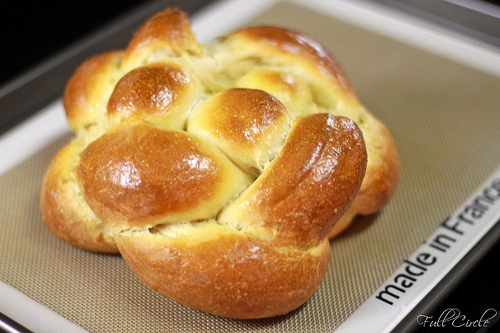Shortly after Christmas, I found myself craving challah. What’s wrong with that statement? Absolutely nothing. Don’t forget, we are the family who enjoys a post Christmas Dinner dinner at the local Jewish Deli every year.
I told my mother that I must have been Jewish in a former life due to my insane love for the Jewish culinary culture. She claims I got it from her genes since all of her friends growing up were Jewish and she enjoyed dinner at their homes quite often. There’s nothing scientific to either argument, but we’ll just roll with it.
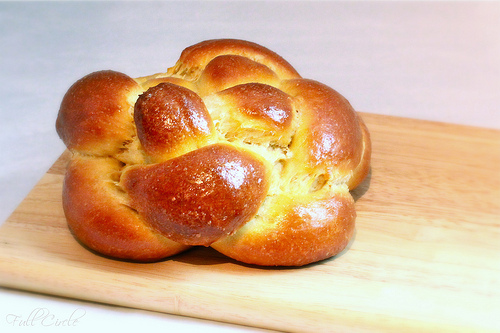
Back to challah. I love challah. So much, in fact, that when I was living in Dallas I would pick up a loaf at least once a week at Whole Foods. Had I known that it was so easy to make, I could have saved a good chunk of money by making it at home. Now I know, but now I have to be careful not to quadruple my carb intake because it is so easy to make at home. And delicious, ridiculously delicious.
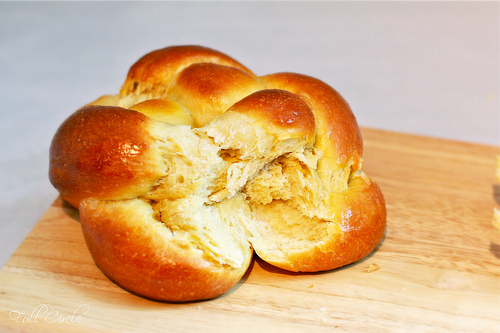
A big thank you to the Baking Barrister for steering me in the direction of her favorite Challah recipe – it tasted exactly like my favorite style of challah from Whole Foods. Another thanks goes out to Tamar Ansh for this great tutorial on how to weave a round loaf. I have to admit that my first attempt at challah came out near perfect thanks to the input of these ladies!
Challah
recipe from Fine Cooking
Ingredients:
2 tsp. instant yeast (Red Star Quick Rise, SAF Perfect Rise, Fleischmann’s Rapid Rise or Fleischmann’s Bread Machine Yeast)
16-3/4 oz. (3-1/2 cups) unbleached all-purpose flour (Hecker’s, Gold Medal, or Pillsbury); more as needed
1/4 cup warm water
3 large eggs
1/4 cup vegetable oil
1/4 cup honey
1-1/2 tsp. table salt
For the glaze:
1 egg, lightly beaten
Sesame or poppy seeds for sprinkling (optional)
Preparation:
In a large bowl, mix the yeast with 1/2 cup of the flour. Add the warm water, stir, and let this mixture, called a sponge, sit until it starts to puff up, 15-to 20-minutes. Add the eggs, oil, honey, and salt; stir until well combined. The sponge will remain lumpy—this is fine. Add the remaining flour and mix the dough in the bowl until all the ingredients are combined. Turn the dough out onto a work surface and knead until fairly smooth, about 2 minutes. The dough should feel very firm and will be hard to knead. If it’s soft and sticky, add more flour until it’s very firm. Transfer the dough to a large, clean container and cover it well. Let it rise until doubled in bulk and very soft to the touch, about 2 hours, depending on the room temperature. Line an insulated baking sheet with parchment or oiled foil. If you don’t have an insulated sheet, stack two sheets together (this keeps the bottom of the bread from overbrowning during baking).
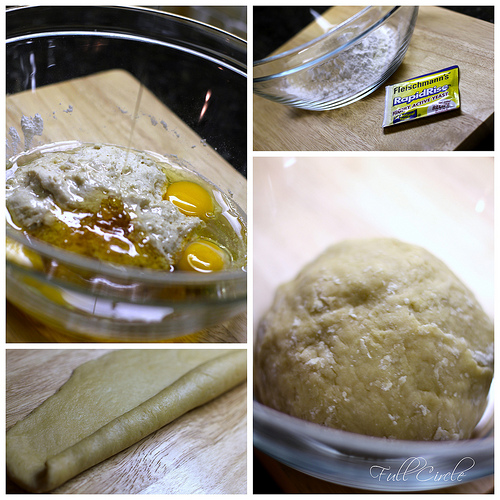
To shape the dough:
Turn the dough out onto a lightly floured work surface and sprinkle a little more flour over it. Spread and flatten the dough a bit, but don’t worry about punching it down. Cut it into three to six equal pieces, depending on your desired braiding pattern. Set aside the dough pieces, cover them lightly with plastic, and brush all the flour off the work surface. Have a small bowl of water handy. Using no flour, roll a piece of dough with a rolling pin into a very thin sheet, between 1/8 and 1/4 inch thick (don’t worry about making a rectangle; an amoeba-type shape is fine). The dough may stick to the work surface; this is all right—just nudge it gently with a dough scraper. Tightly roll up the sheet like a carpet to form a strand. Roll the strand back and forth between your hands until it’s thin, very even, and 12 to 15 inches long. Braid into desired loaf shape.
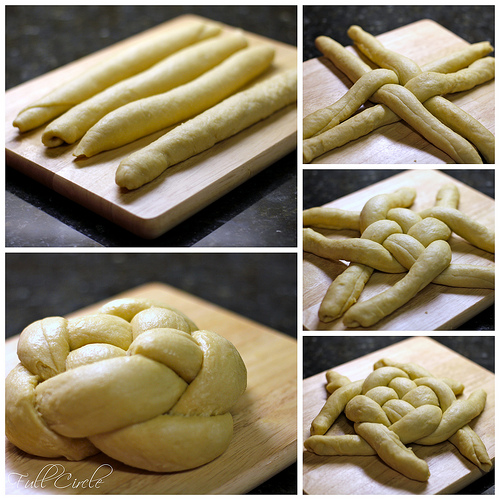
Transfer the braid to the lined baking sheet and cover it loosely but thoroughly with plastic wrap. Let proof until doubled in bulk and the loaf remains indented when lightly pressed, about 2 hours, depending on room temperature. (If in doubt, let the dough proof more rather than less.)
To bake:
Position an oven rack in the lower third of the oven and heat the oven to 325°F. Just before baking, brush the dough with the beaten egg. Sprinkle with sesame seeds or poppy seeds, if using. With a thin wooden skewer, poke the bread deeply all over (the holes will prevent air pockets and help the bread keep its shape during baking). Bake for 20 minutes. Rotate the challah 180 degrees and bake until the bread is a dark, burnished brown, about another 15 minutes. (If the challah is browning too rapidly cover it loosely with foil and let it finish baking. Don’t remove the loaf too soon, as you’ll risk underbaking.) Let cool thoroughly on a rack.
